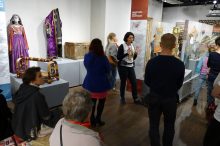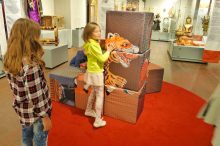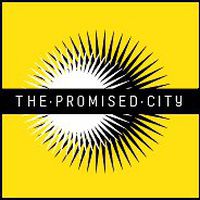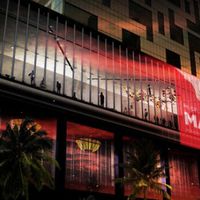"Opening a temporary and a permanent exhibition room was our goal for years"
 The Asia and Pacific Museum in Warsaw, Poland, has recently opened a new temporary exhibition and its first permanent exhibition. To celebrate this, we have talked to its Director, Dr. Joanna Wasilewska.
We've heard there are several new developments at the Asia and Pacific Museum - can you tell us what's happening?
After moving to the new premises, we started in 2013/2014 with the equipment of the “backstage” – restoration atelier, storage rooms, etc., a project supported with EU funds. Simultaneous
The Asia and Pacific Museum in Warsaw, Poland, has recently opened a new temporary exhibition and its first permanent exhibition. To celebrate this, we have talked to its Director, Dr. Joanna Wasilewska.
We've heard there are several new developments at the Asia and Pacific Museum - can you tell us what's happening?
After moving to the new premises, we started in 2013/2014 with the equipment of the “backstage” – restoration atelier, storage rooms, etc., a project supported with EU funds. Simultaneous ly, we continued our event programme (lectures, slideshows, concerts, workshops etc.) and prepared the exhibitions plans for the next years. We also came back to the permanent display project which was delayed because of the financial shortages and, on the other hand, delays with the building site itself. Now, supported by the Polish Ministry of Culture, we have opened two new exhibition rooms.
ly, we continued our event programme (lectures, slideshows, concerts, workshops etc.) and prepared the exhibitions plans for the next years. We also came back to the permanent display project which was delayed because of the financial shortages and, on the other hand, delays with the building site itself. Now, supported by the Polish Ministry of Culture, we have opened two new exhibition rooms.
The first, which is the first permanent one in the Museum’s 43-year history, is “The Sounds Zone”, which we hope to be the first step towards the general permanent reference exhibition. It showcases around 120 musical instruments from different cultures – Middle East to Australia – accompanied by multimedia. The Museum’s collections include many donations from private persons and organisations, and what is also important, this is an input of our friends and cooperating artists/photographers/travelers etc. in gathering materials for that purpose. Part of the display are also a few simple but original instruments for visitors' use – as we can see after the first weekend, children are among the most interested users.
The other space is dedicated to the temporary displays and we start it with “Asia / Pacific / 24 Solec Str.” (our Warsaw address). We want to remind the Warsaw audience of the Museum’s story, its beginnings and development until the present; this is also both funny and inspiring, by showing the major changes in the local and global situation from 1973, when Poland was a relatively isolated country and many media which are today an important source of information simply did not exist, until today, with global networks of people, organisations (including ASEMUS), and media. During the last few years, we have found new ways of expression and contact with audience, and not without success.
Apart of this “historical” introduction, we showcase a choice of around 100 objects representing different cultures whose artifacts are present in the collection: Middle East and Muslim countries of Central Asia, Buddhist Central Asian regions, China, South-East Asia, India and Nepal, Myanmar, Indonesia and Melanesia. This is also the preliminary (as we hope) presentation of what should be present in the future permanent exhibition “Journey to the East”, which is meant to remind that every collection results from a specific point of view. In our case, this is the point of Polish collectors and artists who contributed to the Museum. This means also the point of view of a Central European country, ethnically homogenous, without colonial burden but also without broader experience of intercultural relations. This is our mission: to create a space for such experience.
What criteria have you used to select the pieces on show in these new rooms?
As for the Sounds Zone, the first idea years ago was to create a space in the final part of the “Journey”. However, given the limited funds which we were able to obtain for the first step of this permanent project, we decided to make the “music box” first, as the music is present in all world cultures, plays an important – and not only aesthetic – role in all of them, and our collection in this area is very diverse, allowing to show how basic types of instruments exist in different contexts.
In the temporary room, we made a kind of “choice of the best”, which also allows to present a very basic insight into the diversity of cultures. By the way, the name of “the Asia and Pacific Museum” as applied to the collection of 21,000 objects from the world’s biggest continent sounds a little patronising and “colonial without colonialism” today (if not making a smile) but it also reminds us in what Polish context it was created in the 1970s.
changes in the local and global situation from 1973, when Poland was a relatively isolated country and many media which are today an important source of information simply did not exist, until today, with global networks of people, organisations (including ASEMUS), and media. During the last few years, we have found new ways of expression and contact with audience, and not without success.
Apart of this “historical” introduction, we showcase a choice of around 100 objects representing different cultures whose artifacts are present in the collection: Middle East and Muslim countries of Central Asia, Buddhist Central Asian regions, China, South-East Asia, India and Nepal, Myanmar, Indonesia and Melanesia. This is also the preliminary (as we hope) presentation of what should be present in the future permanent exhibition “Journey to the East”, which is meant to remind that every collection results from a specific point of view. In our case, this is the point of Polish collectors and artists who contributed to the Museum. This means also the point of view of a Central European country, ethnically homogenous, without colonial burden but also without broader experience of intercultural relations. This is our mission: to create a space for such experience.
What criteria have you used to select the pieces on show in these new rooms?
As for the Sounds Zone, the first idea years ago was to create a space in the final part of the “Journey”. However, given the limited funds which we were able to obtain for the first step of this permanent project, we decided to make the “music box” first, as the music is present in all world cultures, plays an important – and not only aesthetic – role in all of them, and our collection in this area is very diverse, allowing to show how basic types of instruments exist in different contexts.
In the temporary room, we made a kind of “choice of the best”, which also allows to present a very basic insight into the diversity of cultures. By the way, the name of “the Asia and Pacific Museum” as applied to the collection of 21,000 objects from the world’s biggest continent sounds a little patronising and “colonial without colonialism” today (if not making a smile) but it also reminds us in what Polish context it was created in the 1970s.
 How do you expect these new exhibition spaces to change the Museum and the way it operates?
To open at least a small permanent exhibition and a professional space for temporary displays was our main goal for years. Since 2013 we operated with frequently changing and rather simple exhibitions – paintings, photos, installations – in the main hall space, looking for funds (which we are still doing, now we are waiting for the results of an application which would allow us to build Indonesian and Central Asian galleries). But at the same time, we continued and enlarged a huge programme of events, as already mentioned. In 2016, after the reconstruction of the educational department, also the numbers of children and youth participating in new workshops have doubled. But now, the main thing is that we have the exhibition spaces as both the basic offer and as background for other activities – which should also increase the number of visitors – as the core of the Museum’s image. Among other new activities, accompanying the “Sounds Zone” will be a new programme of concerts presenting different musical traditions.
Finally, what does ASEMUS mean to your Museum? And do you see new opportunities following the opening of the new exhibition spaces?
We have not participated actively in ASEMUS' programmes until now, but anyway, this is an opportunity to get information about what is going on in the Asian museum world, to network further, to learn from the best; an inspiration for our work. We will consider now the possibilities to become closer to the rest of the network.
How do you expect these new exhibition spaces to change the Museum and the way it operates?
To open at least a small permanent exhibition and a professional space for temporary displays was our main goal for years. Since 2013 we operated with frequently changing and rather simple exhibitions – paintings, photos, installations – in the main hall space, looking for funds (which we are still doing, now we are waiting for the results of an application which would allow us to build Indonesian and Central Asian galleries). But at the same time, we continued and enlarged a huge programme of events, as already mentioned. In 2016, after the reconstruction of the educational department, also the numbers of children and youth participating in new workshops have doubled. But now, the main thing is that we have the exhibition spaces as both the basic offer and as background for other activities – which should also increase the number of visitors – as the core of the Museum’s image. Among other new activities, accompanying the “Sounds Zone” will be a new programme of concerts presenting different musical traditions.
Finally, what does ASEMUS mean to your Museum? And do you see new opportunities following the opening of the new exhibition spaces?
We have not participated actively in ASEMUS' programmes until now, but anyway, this is an opportunity to get information about what is going on in the Asian museum world, to network further, to learn from the best; an inspiration for our work. We will consider now the possibilities to become closer to the rest of the network.
Pictures provided by the Asia and Pacific Museum.
Similar content
24 Sep 2016 - 15 Jan 2017
posted on
29 Mar 2012
from - to
18 Nov 2021 - 11 Sep 2022
posted on
11 May 2010
posted on
05 Apr 2016
posted on
10 Mar 2012



